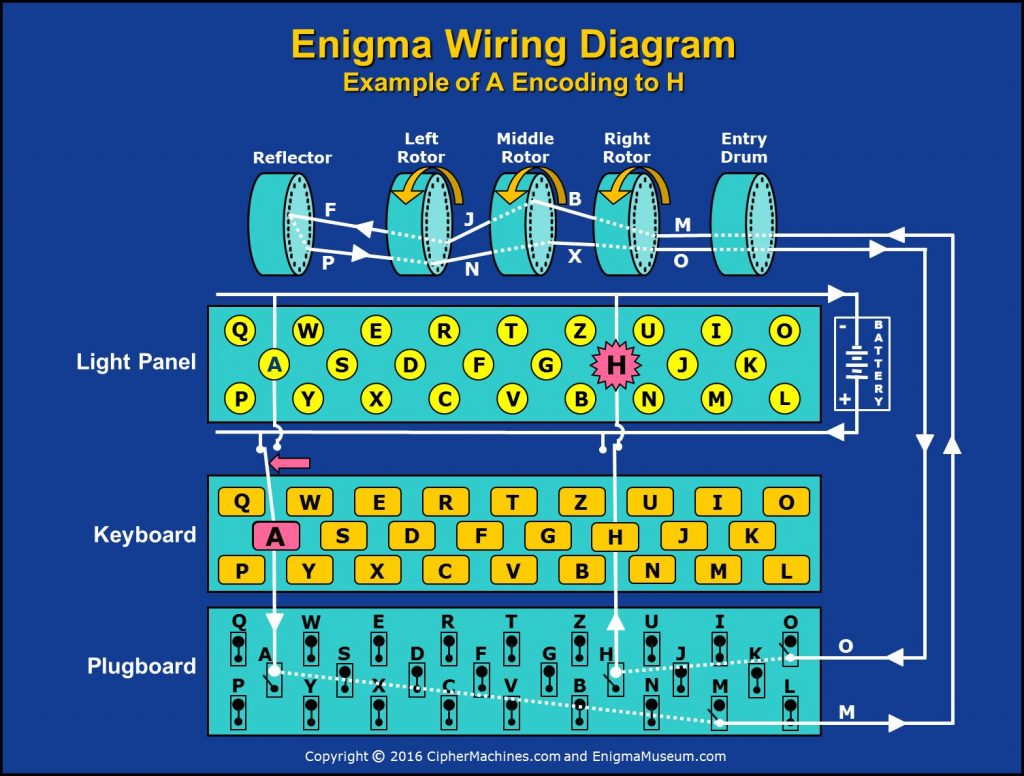

The French passed the material to the Poles, and Rejewski used some of that material and the message traffic in September and October to solve for the unknown rotor wiring. Those keys included the plugboard settings.

France's spy Hans-Thilo Schmidt obtained access to German cipher materials that included the daily keys used in September and October 1932. Compact and easily portable, the Enigma machine filled that need.Ī memorial to Marian Rejewski, the mathematician who first broke Enigma and educated the British and French about Polish methods of cryptanalysisĪround December 1932 Marian Rejewski, a Polish mathematician and cryptologist at the Polish Cipher Bureau, used the theory of permutations, and flaws in the German military-message encipherment procedures, to break message keys of the plugboard Enigma machine. Since adversaries would likely intercept radio signals, messages had to be protected with secure encipherment. Pre-war German military planning emphasized fast, mobile forces and tactics, later known as blitzkrieg, which depend on radio communication for command and coordination. With its adoption (in slightly modified form) by the German Navy in 1926 and the German Army and Air Force soon after, the name Enigma became widely known in military circles. Japanese and Italian models were also in use. Several different Enigma models were produced, but the German military models, having a plugboard, were the most complex. Early models were used commercially from the early 1920s, and adopted by military and government services of several countries, most notably Nazi Germany before and during World War II. The German firm Scherbius & Ritter, co-founded by Scherbius, patented ideas for a cipher machine in 1918 and began marketing the finished product under the brand name Enigma in 1923, initially targeted at commercial markets. This was unknown until 2003 when a paper by Karl de Leeuw was found that described in detail Scherbius' changes. The Enigma machine was invented by German engineer Arthur Scherbius at the end of World War I.


#Enigma meaning series#
While Nazi Germany introduced a series of improvements to the Enigma over the years, and these hampered decryption efforts, they did not prevent Poland from cracking the machine as early as December 1932 and reading messages prior to and into the war. The receiving station would have to know and use the exact settings employed by the transmitting station to successfully decrypt a message. The security of the system depends on machine settings that were generally changed daily, based on secret key lists distributed in advance, and on other settings that were changed for each message. The rotor mechanism changes the electrical connections between the keys and the lights with each keypress. Entering ciphertext transforms it back into readable plaintext. If plain text is entered, the illuminated letters are the ciphertext. In typical use, one person enters text on the Enigma's keyboard and another person writes down which of the 26 lights above the keyboard illuminated at each key press. The Enigma has an electromechanical rotor mechanism that scrambles the 26 letters of the alphabet. The Enigma machine was considered so secure that it was used to encipher the most top-secret messages. It was employed extensively by Nazi Germany during World War II, in all branches of the German military. The Enigma machine is a cipher device developed and used in the early- to mid-20th century to protect commercial, diplomatic, and military communication.


 0 kommentar(er)
0 kommentar(er)
